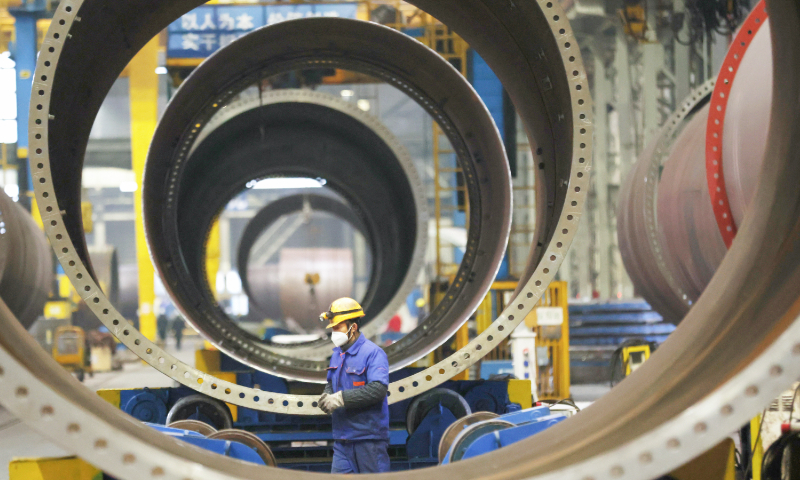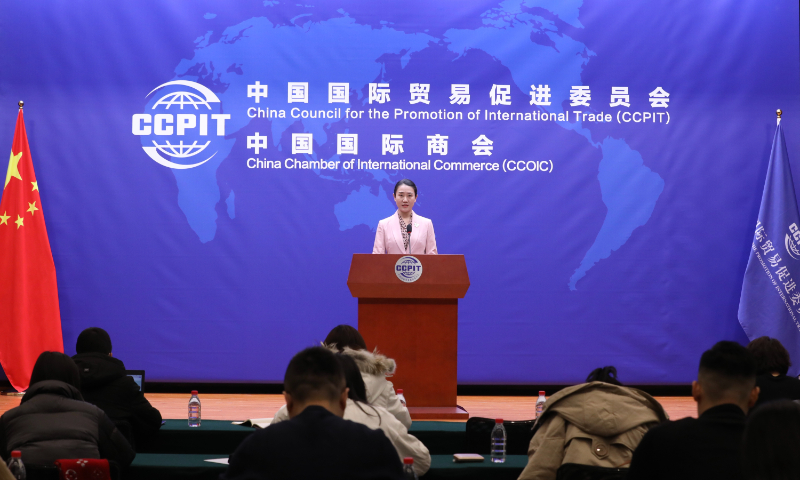China won't 'grow old before getting rich' as constant tech innovations drive economic growth: Justin Lin Yifu

China's Government Work Report has set a GDP growth target of around 5 percent for 2024. Considering the international and domestic economic conditions, with a potential annual growth rate of 8 percent, it is entirely possible for China to achieve an economic growth rate of above 5 percent.
China has enough room for elevation of technological innovation, industrial upgrade and productivity level. The country has a high savings rate, abundant investment resources, and a commitment to develop its economy.
China, as a major developing economy, is still in a process of industrial upgrade and still faces a big gap with developed countries, but this creates a latecomer's advantage. During this catch-up stage, other economies such as Japan, South Korea and Germany achieved a growth rate of 8 percent or above. If they can achieve that, China also has the potential to achieve it.
Compared with those countries, China also has another advantage in the new economy, represented by artificial intelligence and digital economy. China is placed at the same start line as those developed countries, but it has demonstrated a significant advantage in tech innovation involving new economy.
There are three reasons. First, China has abundant human capital. With a population of 1.4 billion, China possesses a vast pool of talent who possess entrepreneurial spirit and technical skills.
Second, China has already become the world's largest economy based on purchasing power parity calculations. That means any technological innovation or new product development can swiftly enter the domestic market and benefit from economies of scale. Even when competing with developed countries, China can surpass them in economies of scale thanks to its enormous domestic market size.
Thirdly, China has the best industrial supporting capability of almost any economy globally.
'China peaked' rebuttal
Some foreign scholars have made claims over "peak China" claim or asserted that the Chinese economy is already on a downward trend toward "Japanification." However, there are key differences between China and Japan back then. Japan experienced relative stagnation in technological innovation, industrial upgrading, and productivity improvement, with no emergence of new industries after the 1980s and 1990s.
In contrast, China has the advantage of being a latecomer. It can utilize the gap with developed countries to introduce, digest, absorb, and then innovate new technologies, and make them a source of industrial upgrade. Across the new economy, China is starting from the same place as developed countries, with a large pool of talent, massive market, and comprehensive industrial infrastructure. So the situation that occurred in Japan is unlikely to occur in China.
As long as we continue our technological innovation and industrial upgrading, and improve productivity levels, per capita GDP will grow faster than that of the US.
China's per capita GDP is already over $12,500, which is very close to the threshold of $13,000 for becoming a high-income nation. As long as we make good use of the favorable conditions for technological innovation and industrial upgrading, I believe we can become a high-income country - if not in 2025, then 2026.
With a growth rate of between 5 percent and 6 percent and a potential annual growth rate of 8 percent through 2035, and 3 percent and 4 percent from 2036 to 2050 with a potential growth rate of 6 percent, China's per capita GDP will hit half that of the US by 2049.Considering China's population is four times that of the US, China's economic size will then be twice that of the US. China will become the world's largest economy and contribute the most to the world economic growth every year.
Population turning point
China's population has reached a turning point and is currently facing the challenges of an aging population. In the 1990s, Japan also experienced population aging issue and an economic growth slowdown. When it comes to economic growth, labor force is important, but what matters more is effective labor, which is the product of both the quantity and quality of labor force.
China has anticipated challenges around an aging population, and has significantly increased its investment in education. Consequently, the education years of the younger workforce have significantly improved. So from the perspective of effective labor, we used to talk about demographic dividend, but now it's the dividend of quality.
Among the 53 countries in the world that are currently facing an aging population, there are 27 countries whose per capita GDP, upon entering the aging population phase, has already reached half or more of that of the US, meaning they are already developed countries. The remaining 26 countries, upon entering the aging population phase, still have a per capita GDP below 50 percent of that of the US, indicating they are "getting old before getting rich," and are in a catch-up phase.
For the first group of countries, in the decade before entering the aging population phase, their economic growth rate only experienced a slight decline, but their per capita GDP remained largely unchanged. This is because their education levels stay basically the same before and after entering the aging population phase, as they already had high levels of education.
Therefore, the increase in human capital was limited. For the second group of countries, their economies still improve after entering aging population phase. This is because their labor force's education level is also increasing, leading to an increase in effective labor, which is beneficial for technological innovation and industrial upgrade.
I believe under the guidance of the new development philosophy, China will put innovation first, its productivity level will continue to improve, and it will not grow old before it gets rich.
The article is based on an interview with Justin Lin Yifu, dean of the Institute of New Structural Economics at Peking University and a member of the Standing Committee of the Chinese People's Political Consultative Conference (CPPCC) National Committee, the top political advisory body.








